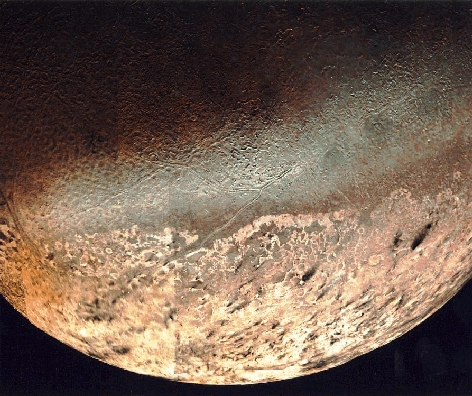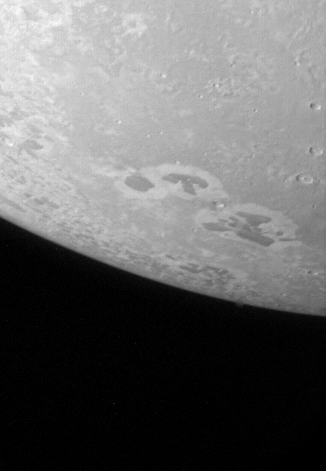

Triton:
Triton is the largest moon of Neptune, with a diameter of 2,700 kilometers. It was discovered by William Lassell, a British astronomer, in 1846 scarcely a month after Neptune was discovered.
Triton is colder than any other measured object in the Solar System with a surface temperature of -235 C (-391 F). It has an extremely thin atmosphere. Nitrogen ice particles might form thin clouds a few kilometers above the surface. The atmospheric pressure at Triton's surface is about 14 microbars, 1/70,000th the surface pressure on Earth.
Triton is the only large satellite in the Solar System to circle a planet in a retrograde direction -- in a direction opposite to the rotation of the planet. It also has a density of about 2.1 grams per cubic centimeter. This means Triton contains more rock in its interior than the icy satellites of Saturn and Uranus do.

The relatively high density and the retrograde orbit has led to the suggestion that Triton may have been captured by Neptune as it traveled through space several billion years ago. If that is the case, tidal heating could have melted (as seen in the above image) Triton in its originally eccentric orbit, and the satellite might even have been liquid for as long as one billion years after its capture by Neptune. Triton is scarred by enormous cracks (shown below). Voyager 2 images showed active geyser-like eruptions spewing nitrogen gas and dark dust particles several kilometers into the atmosphere.
